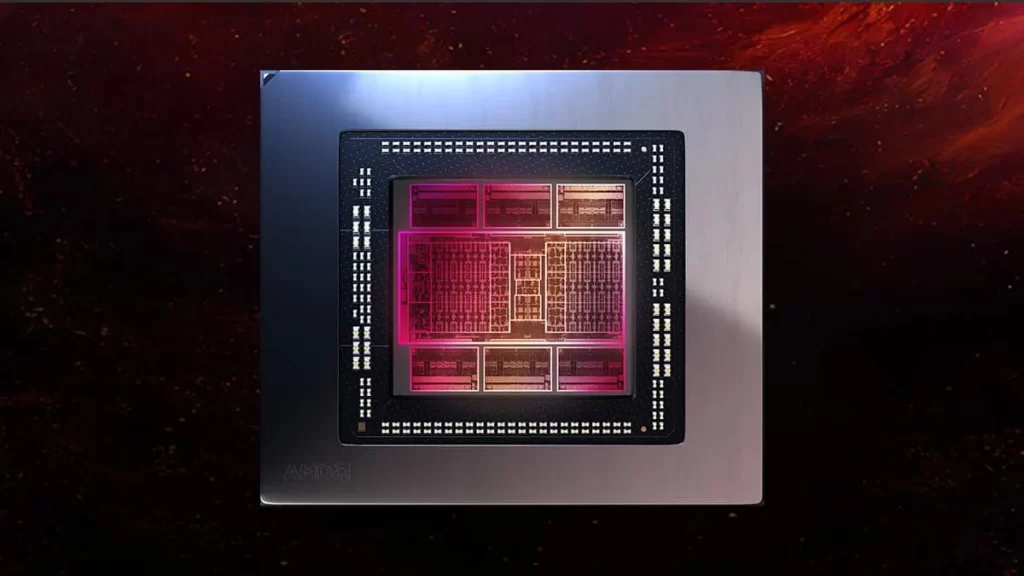AMD RDNA 5 is expected to bring together gaming graphics cards and compute accelerators into a single architecture. While until now it has used a separate RDNA architecture for games and CDNA for AI and servers, it is now preparing a unified platform that can handle both. There have been reports floating around the internet that the new architecture will carry the new UDNA designation. But according to the latest reports, it looks like the architecture will retain the name AMD RDNA 5 architecture. The simple designation means better clarity in marketing but also for gamers or developers.
What does AMD RDNA 5 represent in practice?
The unified architecture is designed to handle not only traditional gaming, but also demanding computations for AI, ray tracing and professional applications. With this AMD RDNA 5 architecture, AMD wants to not only catch up, but also surpass Nvidia’s long-standing lead in advanced computing and AI.
The inspiration is obvious – Nvidia has been using a unified platform (CUDA) for years that interconnects both gaming and compute GPUs. AMD is therefore following a similar path, but with its own approach and hardware tailored to the needs of multiple markets. From our point of view, this is an extension of the rivalry between Nvidia and AMD, and we as users couldn’t be happier and can only wait to see what one or the other surprises us with in the future.

Double the performance in ray tracing, a significant leap in AI
According to leaked information, the new RDNA 5 architecture is set to bring significant shifts in performance, not only in gaming, but also in AI computing:
- approximately double the performance in ray tracing,
- noticeable improvements in AI tasks such as image upscaling and frame generation,
- approximately 20% performance increase in traditional rendering per compute core.
However, ray tracing is not about doubling the number of frames per second. Instead, the card will be able to process the same graphics calculations faster and more efficiently. The result will be smoother images and less strain on the system, especially in visually demanding games.
AMD’s RDNA 5 architecture is expected to be the cornerstone for the heralded AMD Radeon RX 10090 XT, which is expected to arrive sometime in late 2026 or early 2027.
Will AMD RDNA 5 come to consoles as well?
Yes, and that’s the next big interesting thing. Because AMD has long-standing partnerships with game console manufacturers like Sony (PlayStation) and Microsoft (Xbox). The new architecture is expected to be the basis for future generations of both of these devices.
This could bring more detailed visuals, more realistic lighting effects and better use of artificial intelligence directly in the consoles. However, as this is a system-on-chip (SoC), AMD has to strike a balance between performance, power consumption and production costs. Therefore, according to current information, it seems that 3D V-Cache technology will not be used in console chips, mainly due to cost and simplification of the overall design.
If you’re interested in what’s hidden in the game consoles themselves, feel free to read our other article about graphics cards in the playstation.
What does AMD RNDA 5 mean for customers?
For gamers and casual users alike, this is positive news. AMD is confident that the new architecture will bring significant improvements not only in gaming, but also in AI computing and ray tracing – areas where it has lagged slightly behind Nvidia so far. AMD RDNA 5 could bring new graphics cards that can handle everything from gaming and video to more demanding AI applications.
The important thing will be when AMD RDNA 5 architecture comes to the world. There’s no official date yet, and the company doesn’t plan to reveal further details even at the Hot Chips conference in August 2025. Therefore, we are left with only one option and that is to follow AMD’s official website for the latest information.
Conclusion
AMD RDNA 5 represents a big step towards the future of graphics cards. By combining gaming and computing architecture into one platform, it aims to offer powerful performance, efficiency and versatility in one package. We highly recommend keeping a close eye on AMD’s official website so you don’t miss any official information. If AMD RDNA 5 lives up to expectations, it could be one of the most important hardware advancements of recent years.
